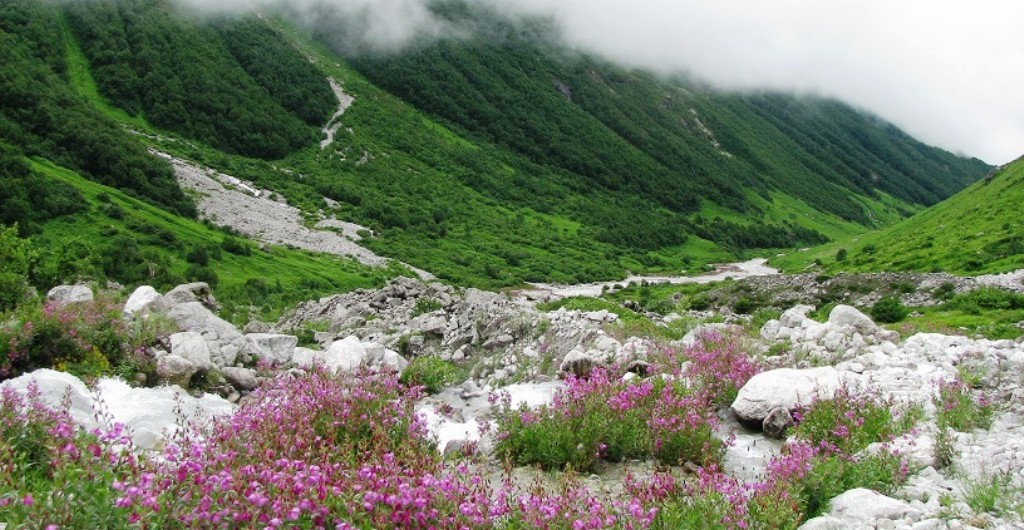Kartik
Latest posts by Kartik (see all)
- Taste The True Flavor of Ladakh On These Top Three Treks! - July 10, 2018
- Travel Goals: Why Kedarkantha Peak Is A Total Chase - May 18, 2018
- Spiritual Yatras 2018: Nanda Devi Yatra, Kailash Mansarovar Yatra - May 16, 2018
India is infamous throughout the world for its sweltering summer heat, which I, for one, am sick and tired of. The real winters come in late December, and before you know it, it is summers already. Just as March ends, the temperature starts rising to the point, where you feel the ground burning, even if you are wearing shoes. Yeah, we can switch on the AC to get some respite and hike up our electricity bill, but I want something more. Call me demanding if you will, but I feel that a technologically fabricated environment can never match the feeling of being in the relatively cool places on Earth.
What you can do in such a case is head to the mountains of the North…the mighty Himalayas. Within the chain, there are places, mostly above the altitude of 6000 feet that are cool even during the strongest and most pathetic of summers. But, mind you, even there the temperature can touch 30 degree Celsius. The alternative obviously is going even higher, say 10-15000 feet? Whatever havoc the summers are laying in the rest of the country, such places always remain cool. For ages, I have wanted to visit the Valley of Flowers, located in the state of Uttarakhand! So, I went to the internet, wanting to know everything I could before I plan to go. Below, I share with you the treasure of knowledge that I found about this “heavenly” place.
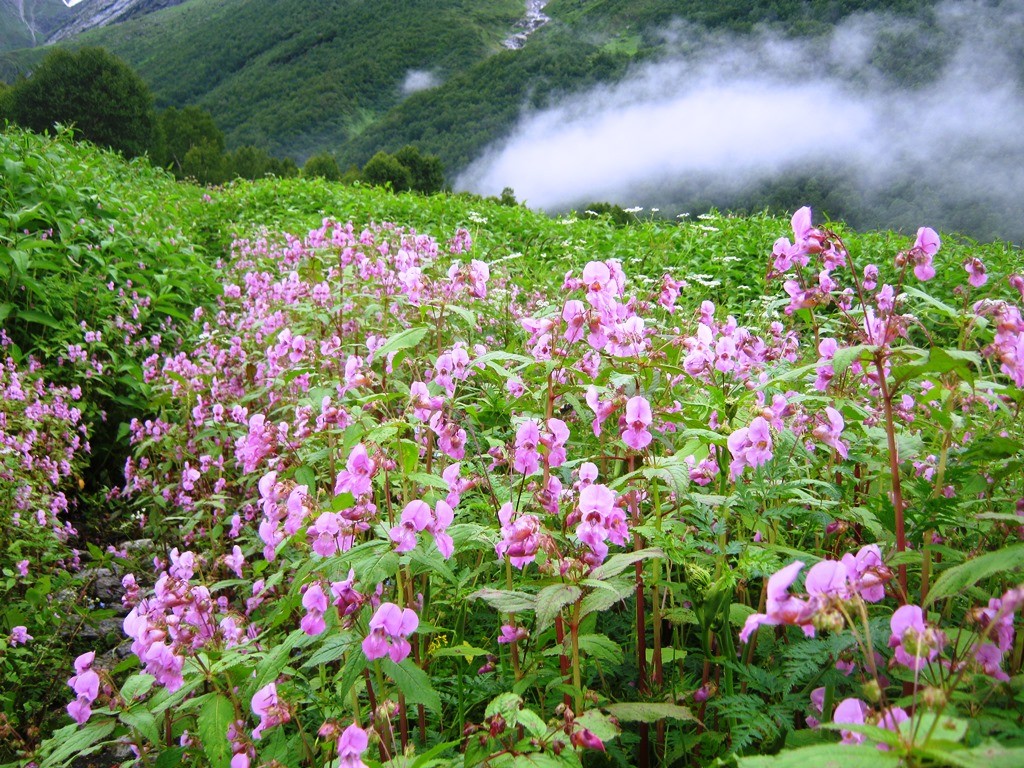
What is it exactly?
Well, as the name suggests, it is a valley, renowned for its floral diversity. Positioned in the district of Chamoli, it is one of those places that will make you realise just why Uttarakhand is called Dev Bhoomi, meaning the Land of the Gods. It is home to over 600 species of flowers that thrive in the cool climes of the Western Himalayas, making it a dream destination for nature lovers, botanists and photographers. This quality has bestowed it with the status of a National Park as well as a UNESCO World Heritage Site!
Valley of Flowers would have remained hidden from mankind, had a party of 3 mountaineers not chanced upon it. Frank S. Smythe, Eric Shipton, and R.L. Holdsworth were popular British Mountaineers, who in 1931, lost their way after returning from a successful climb of Mt. Kamat. They entered this heavenly looking valley, which was blooming with many varieties and colours of flowers. They were so mesmerized by what they saw that they immediately called it the Valley of Flowers. That is how it has been known ever since. Frank Smythe even authored a book titled Valley of Flowers.
How can you get here?
Being deep in the Himalayas, this divine setting is accessible only on foot. There are two alternative trails to pick for a Valley of Flowers trek, both equally scenic. The more popular one starts from a village, known as Ghangaria, situated at an altitude of around 10000 feet. You can reach Ghangaria via a trek from Govindghat, which in turn is accessible from the town of Joshimath by road.
The other, relatively new (although not really) route, is known as the Kunthkhal-Hanuman Chatti trail. It was the original way into the valley, before the one via Ghangaria was discovered. After the Kedarnath floods, the government opened it again to provide an alternative entry to the valley and to serve as an escape route if another natural calamity traps people living in the region.
Geographical Setting and Ecological Zones
Topographically speaking, the valley is characterised as a hanging valley. It is a valley of the Pushpawati River, one of Alaknada River’s tributaries, and is at a higher altitude than the valley of the main stream. Running in an east-to-west direction for about 15 km, it is 6 km at its widest point, with a total area of about 87.5 sq km. Its mean elevation is approximately 11500 feet, making it cool throughout the year.
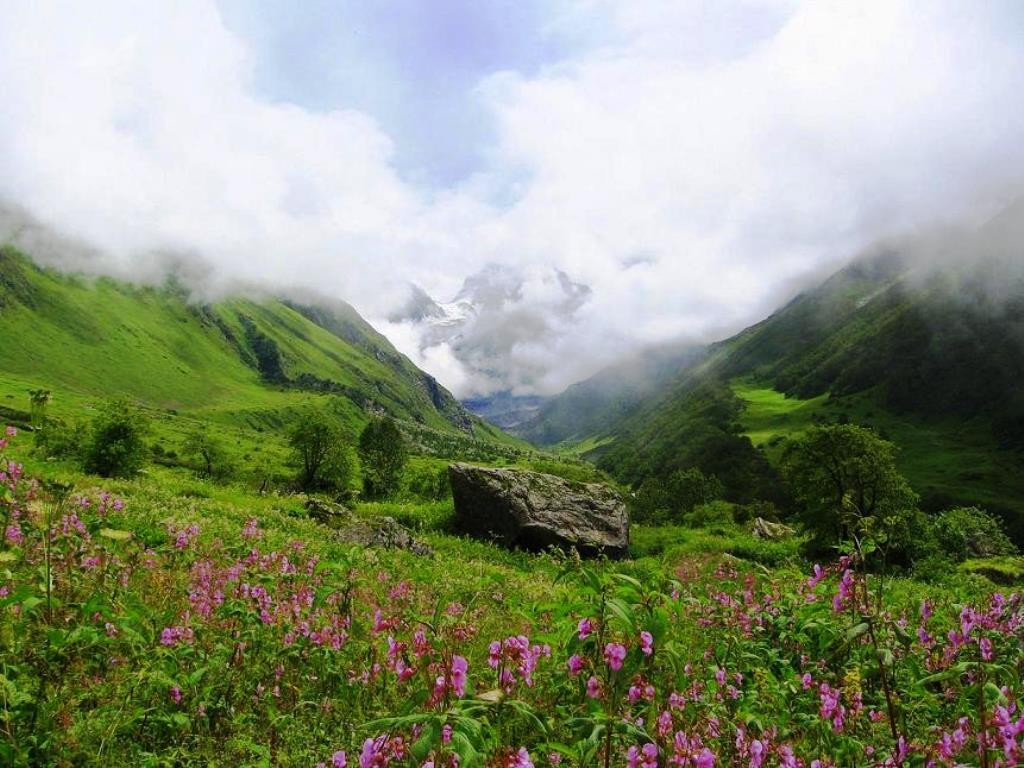
The valley is surrounded by a ring of peaks with about 20000-feet altitude that silently seem to guard the protected realm. They are almost like the physical manifestations of local deities. Dunagiri, Rishi Parvat, Kalanka, Nanda Khat, Nanda Devi East, Nilgiri Parvat, Rataban, Gauri Parvat, Saptasring and Nanda Devi are prominent among them. The valley bed is composed of crystalline rocks that contain quartz and mica, and the soil here is acidic, which helps it in retaining moisture.
Almost 73 per cent of its area, equalling about 6358 hectares, is under permanent snow as it is heavily glaciated. A mere 6 per cent or 429 hectares are covered by coniferous forests, and the remaining 1863 hectares (21 per cent) are alpine meadows. The sub-alpine mixed forests are characterised by trees, such as Pindrow fir, Himalayan yew, Himalayan maple, deodars, silver birch, oak and Morinda spruce. These forests are found up to an elevation of 11500 feet above sea level, beyond which the land is covered by alpine grasslands. This is the area with the greatest floral diversity, and at higher altitude only mosses and lichens grow amidst rocky slopes and glacial moraines.
Dance of the Weather
While trekking in the Garhwal Himalayas, where the valley lies, be advised that the weather, especially in the higher reaches, is not static and it can change anytime. But, to give you an idea of the weather conditions in the floral valley, cool weather prevails here throughout the year. During the summer months, you will find the place sunny and dry with almost no precipitation; the temperature almost never goes beyond 20 degree Celsius. But, come monsoon, it is like the heavens are torn asunder, and it rains cats and dogs. The season also sees thick mist, owing to its high elevation; the clouds will always be in your face! Just as the rains stop, the clouds come again and cover the region with a thick blanket of snow, which begins to melt only by late May.
Floral Diversity
The most obvious reason many people pick the Valley of Flowers National Park for trekking in Uttarakhand is the many shades and colours it treats hikers to. Some of the flower species found here are Euphorbia pilosa, Himalayan Slipper Orchid, Iris kaemaonensis, aconites and rhododendrons.
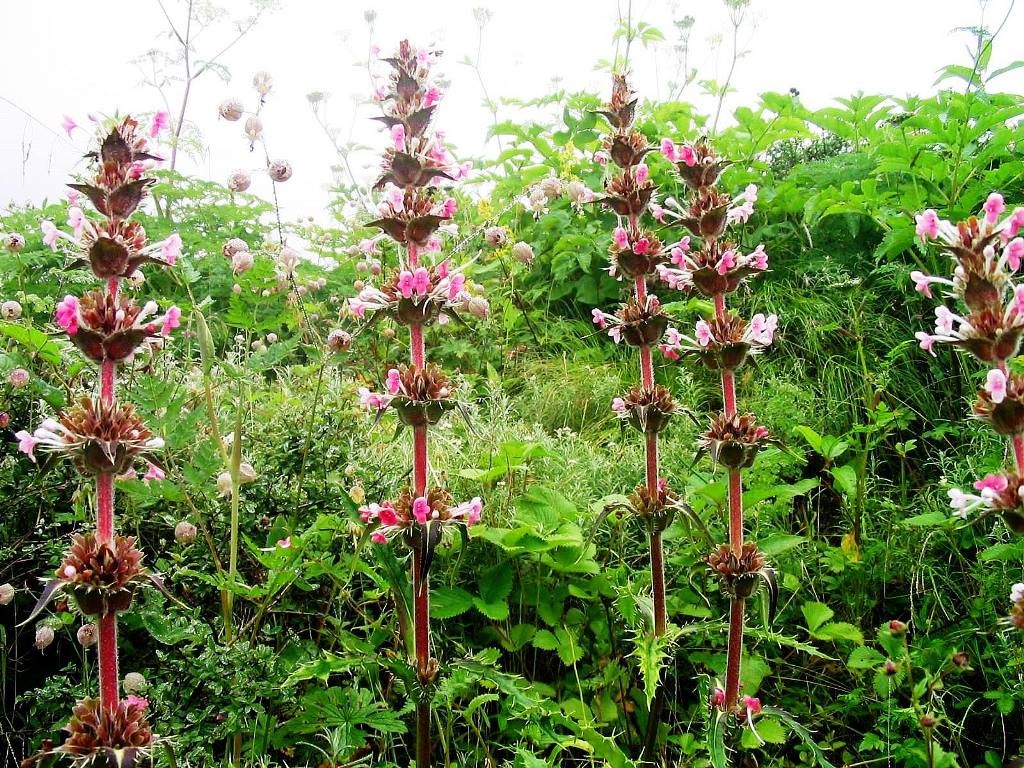
These are only a few to name, and to see more, you will have to come here. Well, I am no botanist, but with some confidence I can say that these will paint the valley in all possible colours (unless by an awful coincidence, all flowers are of the same colour). However, be informed that all the flowers have a particular blooming season so you won’t be able to see all at one time.
Creatures of the Realm
Not only flowers, but the place will also delight you with the sight of numerous animals that live in the cool climate here. The most prominent and also the rarest among them is the snow leopard, truly the ‘king of the valley’. The only way you will be able to see it is if you are really lucky as it lives in almost unreachable places and blends well with the surroundings. Deer species like the sambar and musk deer, bharal or blue mountain sheep and Himalayan tahr may be seen here more easily. I personally want to specially see brown bears, red foxes and black bears that are again common here.
You may also get to see large birds of prey like lammergeiers, griffon vultures and Himalayan griffon vultures, feeding on the carcasses of animals. Among them the lammergeier or the bearded vulture is of special mention. Feeding off of the corpse is one thing, but throwing bones at rocks from a good height so they crack and lammergeiers are able to suck the marrow is another. If you like colours more, then keep an eye out for blood pheasants, monals or snowcocks.
Reverence among Locals
When you come here, please do not throw waste on the ground or harm any animals in any way. One, because the region is a protected territory, and two, it holds immense significance for the local people. Again, the significance of the valley for the locals is twofold: religious and economical. Nanda Devi, the primary peak in the region, is personified as a goddess, who is worshipped. Her temples are scattered in villages, and every 12 years, people go on a pilgrimage to there through the mountains.
The local villagers, who had used the valley for centuries to collect wood, wild berries and graze their cattle, were recently banned from entering it when it was made a protected territory. But, since tourists started coming here, the locals have again found a livelihood. They have been helping the Uttarakhand government remove the tons of garbage, irresponsible travellers have been throwing here; the government has been paying them for it. The locals have also been helping the forest department in keeping a check on poaching activities that have been rampant here. In the summer and monsoon months, the village of Ghangaria becomes a temporary shelter for tourists, and the villagers are gaining by running homestays.
When can you get here?
The valley is snowbound for the most part of the year, and the snow begins to thaw only by the end of May. From then till the end of September, you can come here. If you come here earlier or later, you will never be able to see where the valley ends and the glaciated zone starts, for it would all look the same. Remember one thing…you may trek here as much as you want, but you will not be able to set up camp as human inhabitation, permanent or temporary, is strictly prohibited by the authorities.
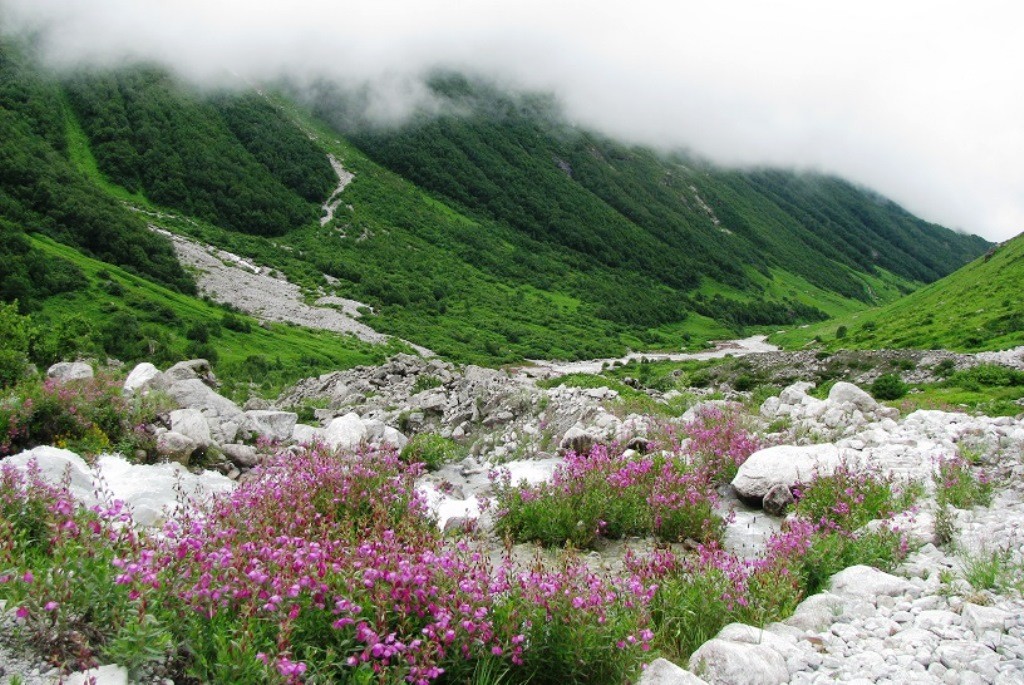
By now, you would have gotten comprehensive information on the destination, and I hope my blog was able to show you some shades of the valley. So, I am heading here as soon as possible and hope to see some of you there.

